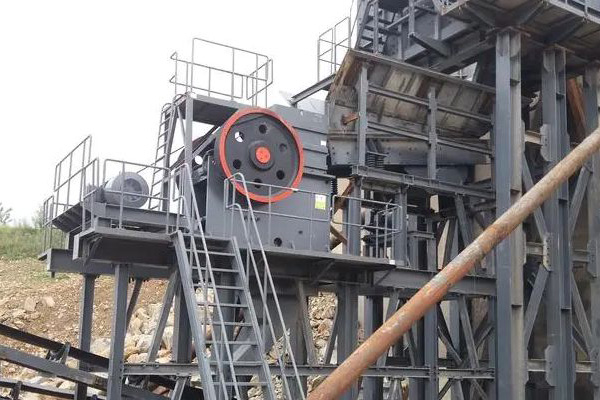A jaw crusher is one of the most commonly used machines for primary crushing in a wide range of industries, such as mining, construction, and aggregate production. It plays a critical role in the size reduction of raw materials, particularly in breaking large, hard materials into smaller, more manageable pieces. This makes the jaw crusher essential for further processing in secondary and tertiary crushing stages. Below is an in-depth look at the functioning, components, and advantages of jaw crushers for primary crushing.
Working Principle
The working principle of a jaw crusher is relatively simple yet highly efficient. The material is fed into the crushing chamber, which consists of two jaw plates. One of these plates is stationary (fixed jaw), while the other (the movable jaw) moves back and forth through a cam or pitman mechanism. The material is reduced in size as the movable jaw compresses the material against the fixed jaw.

During the operation, the material enters from the top, where it gets progressively crushed as the space between the jaws narrows. Once the material is sufficiently crushed, it passes out of the crusher at the bottom, known as the discharge opening. The size of the final product is controlled by adjusting the discharge gap, making it adaptable for different crushing applications.
Advantages of Jaw Crushers
- Effective for Tough Materials: Jaw crushers are ideal for processing hard and abrasive materials like granite, basalt, and iron ore. Their rugged design allows them to handle high-strength materials without frequent wear and tear.
- High Reduction Ratio: A jaw crusher has a high reduction ratio, meaning it can take large, bulky materials and reduce them to smaller sizes in one pass. This is crucial in mining and aggregate production where raw materials are often large and need to be broken down before further processing.
- Simplicity of Design: The design of a jaw crusher is straightforward, making it easy to maintain and operate. Since the wear parts are minimal, these machines have a long service life, requiring less frequent replacements or repairs.
- Adjustable Output Size: The adjustable discharge gap ensures flexibility in the output size, making the jaw crusher suitable for a wide variety of applications. Whether you need coarse material for foundation layers or fine aggregate for concrete, the jaw crusher can be easily configured to meet specific size requirements.
Types of Jaw Crushers
There are two primary types of jaw crushers:
- Single-Toggle Jaw Crushers: These crushers have a single toggle plate connecting the moving jaw to the eccentric shaft. They are more efficient in terms of energy consumption and offer a high throughput capacity. The simplicity of the single toggle design also reduces the weight and cost of the machine.
- Double-Toggle Jaw Crushers: Double-toggle crushers have two toggles and a more complex movement, providing increased crushing force. These are typically used in very hard material applications, where a single-toggle crusher might not provide enough force.
Key Considerations
- Capacity and Size: The size and capacity of the jaw crusher should match the expected production volumes and feed sizes. Machines come in a variety of sizes to meet different requirements.
- Material Hardness: Jaw crushers are best suited for harder materials, though they can handle softer materials when configured appropriately.
- Maintenance: While jaw crushers are known for their durability, routine maintenance is essential to extend their lifespan and maintain optimal performance. Regular inspection and lubrication of bearings, toggles, and other moving parts are key.
Jaw crushers are indispensable machines in industries that require primary crushing. They combine efficiency, durability, and versatility, making them ideal for handling a wide variety of materials. Whether for mining, construction, or recycling, jaw crushers are critical components in breaking down large rocks and materials into smaller, more manageable pieces. Their ability to handle hard and abrasive materials while maintaining low operational costs makes them a popular choice for primary crushing applications.
